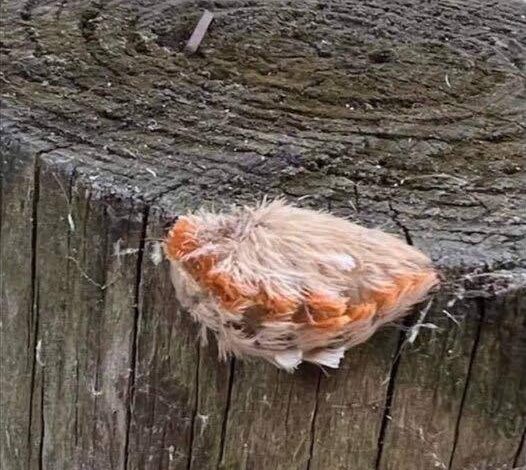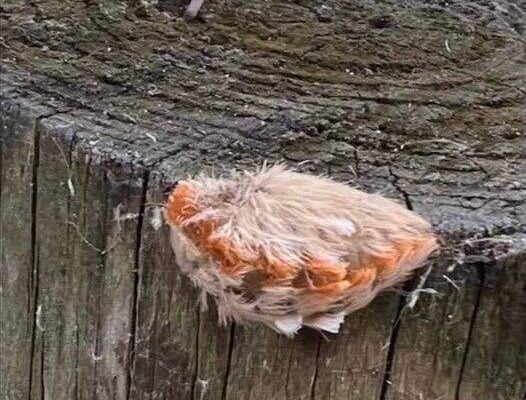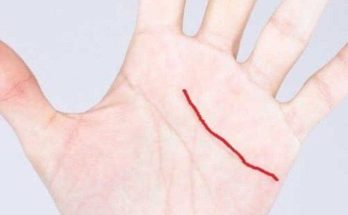Mom Spots Strange “Fur Ball” in Park – Looks Closer and Discovers a Dangerous Creature

It was a sunny, typical afternoon at the park. Kids running around, laughter filling the air, and the warmth of the day bringing families out to enjoy the beauty of nature. For Leslie Howe, a mother from Georgia, this was just another day to let her children play and have fun outdoors. But what started as an ordinary day quickly turned into a heart-pounding moment of concern. It all began with a seemingly harmless, fuzzy little “fur ball.”
What Leslie didn’t know at that moment was that her quick instincts would save her children from a hidden danger—one that looked innocent but was anything but. This wasn’t just an ordinary “fur ball” her kids were playing near; it was something far more sinister lurking in plain sight.

A Curious Discovery: The Fuzzy “Creature”
Imagine this: Leslie, watching her children play, notices them hovering around a strange object. It looked soft, small, and harmless—like a little puff of fluff you might expect to find in the forest. But as any parent knows, you can’t be too careful, especially when your children are involved. Something about this fuzzy ball made her pause.
As she approached, her gut instinct told her to keep her distance. The object seemed odd, out of place. It didn’t move, but something about it just felt wrong. What could this little fur ball be? Leslie wasn’t sure, but she trusted her intuition and pulled her children away from it just in time.
A Closer Look: The Dangerous Truth
What Leslie had stumbled upon was no innocent ball of fluff—it was a creature known as the Megalopyge opercularis, or more commonly, the puss caterpillar. At first glance, this caterpillar doesn’t seem threatening at all. Its velvety, furry appearance might even remind you of a cute, tiny kitten. But underneath that soft exterior lies something far more dangerous. Hidden beneath its fuzzy coat are venomous bristles, ready to deliver a painful sting to anyone who touches it.
The sting from a puss caterpillar is nothing like you’d expect from such a small, harmless-looking creature. According to entomologist Don Hall, the sting can feel “like a wasp sting, but worse.” And in this case, “worse” means a pain so intense, it can make your bones ache.
A Painful Sting That Lingers
When Leslie realized the danger she had narrowly avoided, she couldn’t believe it. How could something so tiny pose such a serious threat? According to reports, the puss caterpillar’s venomous bristles can stick to the skin and cause excruciating pain. The sensation is immediate, but it intensifies over time, leaving the victim in agony. The sting can even spread the pain to other parts of the body.
People who have been stung describe a throbbing pain that doesn’t go away quickly. Some say it feels like their skin is burning, while others report muscle spasms and even intense bone pain. In some cases, the discomfort can last for up to twelve hours or more.

A Deadly Hidden Danger
While the sting from a puss caterpillar isn’t usually fatal, it can cause severe allergic reactions, including anaphylaxis, which is life-threatening. This makes the seemingly harmless creature a hidden danger, especially for young children or those with allergies. Leslie’s quick thinking saved her family from what could have been a serious emergency.
Eric Day, a manager at Virginia Tech’s Insect Identification Lab, knows firsthand just how painful a puss caterpillar sting can be. While mowing his lawn one afternoon, he accidentally brushed against one of these fuzzy creatures. The burning sensation hit him immediately and lasted for several days, leaving behind a blister that lingered for weeks. “It was incredibly painful,” he recalled. “I had no idea something so small could cause such a big problem.”
What to Do If You’re Stung
If you ever come across a puss caterpillar or, worse, get stung by one, it’s essential to act fast. The venomous hairs can stick to your skin, so the first step is to remove them. Experts recommend using tape to gently pull the hairs off your skin before washing the area thoroughly with soap and water. Afterward, applying baking soda or hydrocortisone ointment can help reduce the itching and discomfort.
In severe cases where symptoms worsen, such as swelling, difficulty breathing, or other signs of an allergic reaction, it’s crucial to seek medical attention immediately. Though rare, the sting of a puss caterpillar can cause anaphylaxis, so it’s better to be safe than sorry.
An Unlikely Culprit in American Parks
The puss caterpillar is found in various parts of the United States, from New Jersey to Florida, and even as far west as Texas. These larvae feed on foliage, and they can be found in trees, bushes, and even parks like the one where Leslie and her children were playing. The soft, furry appearance of the caterpillar often fools people into thinking it’s harmless, but this couldn’t be further from the truth.
Parents, in particular, should be on alert when letting their children play outdoors. The threat may seem small, but the consequences of a sting can be significant.
A Mother’s Warning to Others
Leslie’s experience serves as a powerful reminder to always trust your instincts. What seemed like an ordinary day at the park could have turned into a painful ordeal for her family. By sharing her story, Leslie hopes to raise awareness of the dangers that lurk in unexpected places—like the seemingly innocent “fur ball” that was actually a venomous caterpillar.
She wants other parents to be cautious and keep an eye out for these strange creatures, especially when they’re out with their children in parks, playgrounds, or nature trails.
As Leslie’s story resurfaces online, it serves as an important warning to families everywhere: always be aware of your surroundings, especially when it comes to your children. And remember, sometimes the most dangerous things come in the smallest, most unassuming packages.
Have you ever encountered a puss caterpillar or another unusual creature? Share your experiences in the comments below and spread the word to help keep others safe!



